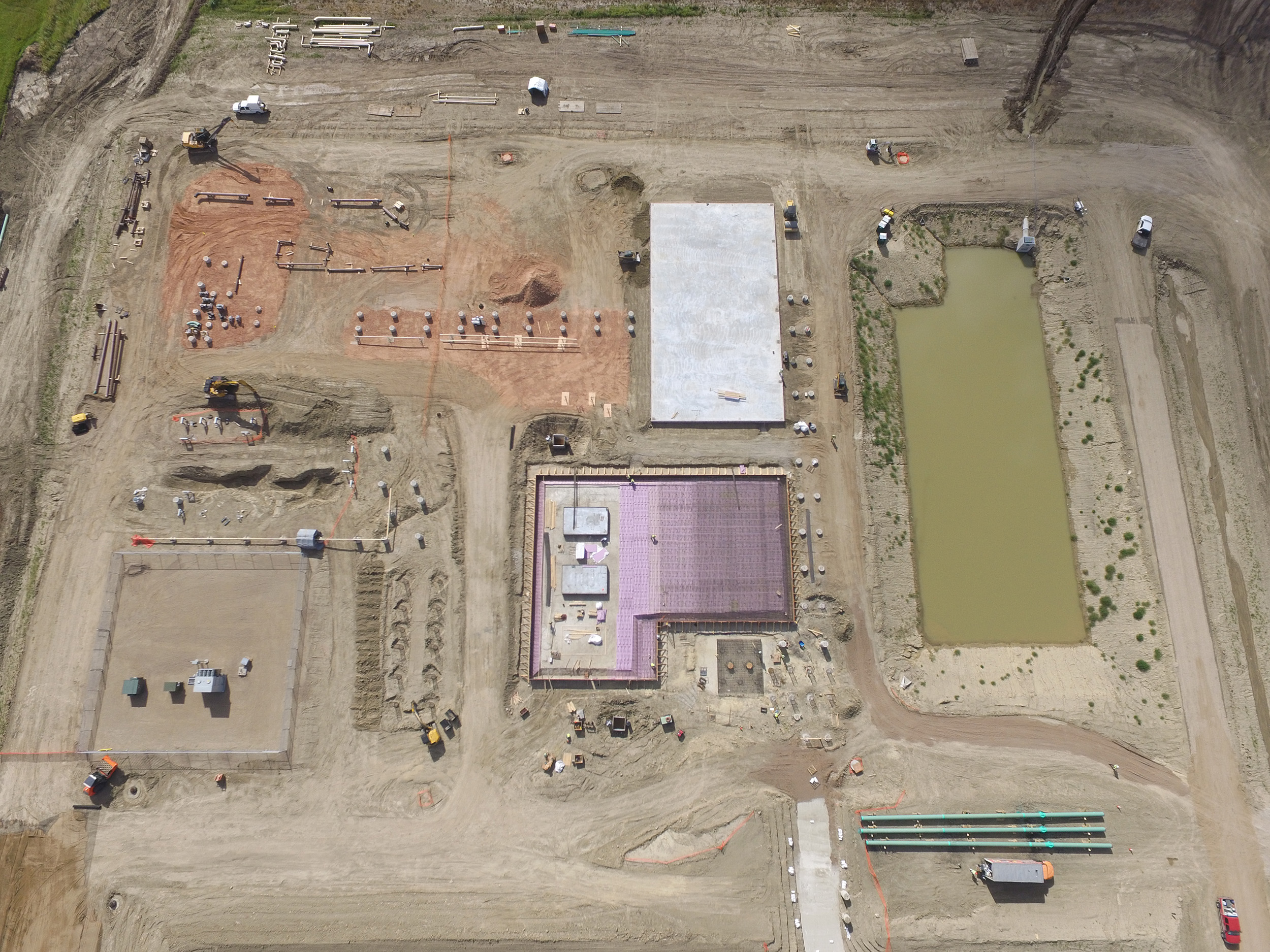Construction engineer built drone business
Now sharing secrets of success
Taylor Mitcham was a project engineer working on the Dakota Access Pipeline when she first flew a drone. Now, she flies them full-time—and helps others (pilots and customers alike) profit from the technology.
Mitcham is as enthusiastic about helping fellow drone pilots build their business as she is about showing those in her previous line of work how unmanned aircraft can increase profits, enhance efficiency, and make on-the-ground data readily available to stakeholders, regardless of where in the world they are. Mitcham and her drone company, SkyNinja, caught the eye of AOPA staff in March at the FAA UAS Symposium in Baltimore, where she was a panelist.
“They wanted to be able to see what’s going on from day to day at the construction site,” Mitcham recalled, adding that the only alternative at the time was to hire an airplane for monthly photo missions that would cost thousands of dollars each. That was also around the time, she said, when the FAA had started “getting more serious” about allowing drones to fly for commercial purposes, then under 333 exemptions. (The arrival of Part 107 in August 2016 would make the regulatory hurdles much easier to surmount.)
"I said 'Let’s start with one—experiment, see how it goes,'” Mitcham recalled. “I’ll drive around all the sites, we’ll get some pictures. They said, 'No, let’s get six. One at each site... and you’re going to teach everybody how to fly.'”
This also led Mitcham to general aviation, and she “went as far as my first solo in a Cessna,” the engineer-pilot recalled. (The FAA had required manned pilot certification for most operators prior to the advent of Part 107.)
Mitcham said the experiment with drones monitoring construction activity was a resounding success, though her company interrupted her aviation career with a transfer to Philadelphia, where controlled airspace kept drones grounded.
“I missed it,” Mitcham said. “I saw how much it benefited that initial construction project. Everyone knew what was going on everywhere. … accounting, supply chain… they were able to verify equipment locations… everybody was using the data.”

Mitcham decided to quit her job and start a new one, and SkyNinja was born. The company website is a study in succinctness, laser-focused on briefly describing only a few of the core functions where a drone fits into the industry: aerial photography and videography to keep stakeholders up to speed on current goings-on; linear and volumetric measurement (such as cut and fills); and visual and thermal inspections of equipment in hard-to-reach places.
“A lot of times when I’m talking about what I do, I kind of leave the drone out of the equation and bring it in at the end,” Mitcham said. She focuses on the benefits that drones deliver, including the capability to gather information that can increase operation efficiency, make projects more profitable, and even help settle contract disputes.
Mitcham said her inside knowledge of the industry is helpful in her approach to potential customers, but not essential. “Only advantage I have is I’ve been there, I’ve done it, I know the language, but you can get there, too.”
Mitcham has started an online community of drone pilots, built around a website and a Facebook group that serve as platforms for discussion, exchange of ideas and information, and advice about how to start a drone business from scratch in any market one might want to serve.

Construction is a subset of a fast-growing segment of the commercial unmanned aircraft industry. The FAA predicts that Part 107 operations will continue on a path of dramatic growth for the foreseeable future, fueled as technology matures and more people come to understand the benefits delivered and the cost advantages of using drones for a growing list of specific applications, including those yet to be discovered or fully developed.
Mitcham said one secret of success is to focus on a particular niche, and develop expertise in what the clients need. Knowing the construction industry from the inside has helped her, but much of what a pilot with a drone business would need to know can be found online, or by talking to people who work in the industry.
"There’s so much information out there,” Mitcham said. She encourages drone pilots to pay attention to the challenges that a particular industry faces, and find the opportunities there. “Get out there and start talking to people, out of the context of the drone. Learn as much as you can.”
Mitcham said that the insight that results from this research leads directly to a successful sales pitch. One need not know how to run an earth mover to understand that the ability to precisely calculate the volume of piles of excavated material, and then compare an actual excavation against a plan with precision in a very short time, has significant value.
And while drones are rapidly gaining popularity among those who build and maintain everything from pipelines to office towers, there remain many potential clients who probably have little idea about the potential benefits that will only increase as technology advances in the future. Mitcham will be competing for those jobs, too, but she’s happy to help others succeed as well. It’s a pretty big pie, enough for many more pilots to share.




